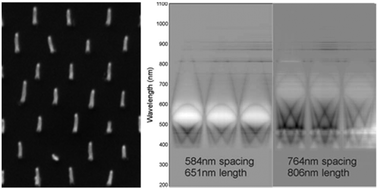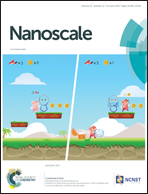Optical bandgap modelling from the structural arrangement of carbon nanotubes†
Abstract
The optical bandgap properties of vertically-aligned carbon nanotube (VACNT) arrays were probed through their interaction with white light, with the light reflected from the rotating arrays measured with a spectrometer. The precise deterministic control over the structure of vertically-aligned carbon nanotube arrays through electron beam lithography and well-controlled growth conditions brings with it the ability to produce exotic photonic crystals over a relatively large area. The characterisation of the behaviour of these materials in the presence of light is a necessary first step toward application. Relatively large area array structures of high-quality VACNTs were fabricated in square, hexagonal, circular and pseudorandom patterned arrays with length scales on the order of those of visible light for the purpose of investigating how they may be used to manipulate an impinging light beam. In order to investigate the optical properties of these arrays a set of measurement apparatus was designed which allowed the accurate measurement of their optical bandgap characteristics. The patterned samples were rotated under the illuminating white light beam, revealing interesting optical bandgap results caused by the changing patterns and relative positions of the scattering elements (VACNTs).



 Please wait while we load your content...
Please wait while we load your content...